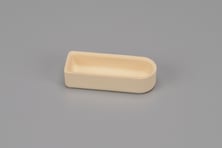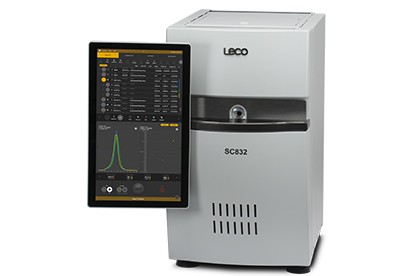As the concern for global warming has increased over the years, ways to sequester carbon has been top-of-mind for many scientists and researchers. Capturing atmospheric carbon in the form of carbon dioxide, converting it, and storing it in soil would not only help the overall environment, but it could help farmers grow better crops as well.

Total Organic Carbon, or TOC, is carbon that is contained in soil organic matter. The amount of TOC within the soil can affect plant growth, as it can serve as a source of energy and a catalyst for nutrient availability through mineralization. It can also help stabilize soil structure, making soil more resistant to erosion. These factors could lead to more successful harvests for farmers. However, in order to properly utilize organic carbon, you must first know how much is already present. You can find this information by testing the soil. Then, you’ll be able to optimize the amount of carbon to enrich your soil. With regular, routine testing, you could even determine how your farming practices are affecting the TOC levels within the soil. Harvesting and tilling can have a negative effect on carbon levels, but practices like double-cropping and crop residue management can positively affect them.
When testing a soil sample, the most common method for determining TOC is the acid digestion method – also known as acid digestion combustion carbon measurement. By acid-treating a sample with dilute hydrochloric acid, the inorganic carbonate species within the sample will effervesce as carbon dioxide. The hydrochloric acid does not react enough with organic carbon to cause it to change state, so whatever carbon content is left after acid-treatment is primarily organic. You can then analyze this acid-treated sample to see the TOC.
LECO Corporation’s 832 Series Instrument was built for determining carbon content. The high-efficiency combustion furnace and improved IR cell design will provide the results you need quickly and accurately. However, getting to the results can be a bit of a tricky process, no matter the instrument you use. This is because typically, acid-treated samples need to be treated first, then transferred to a combustion boat to be analyzed. LECO now offers a solution to streamline your process and make quantifying TOC easier and more efficient than ever.
 Our Non-Porous Ceramic Boats were designed with TOC specifically in mind. These boats make it possible for acid treatment to happen directly within the boat. This means you won’t have to transfer an acid-treated sample into a container for drying, and then a combustion boat, eliminating the chance of sample loss or other errors during the transfers. Your lab will save time and use less consumables, resulting in a holistic improvement to your bottom line. LECO is always striving to find ways to increase productivity in the lab and find solutions to today’s analytical problems.
Our Non-Porous Ceramic Boats were designed with TOC specifically in mind. These boats make it possible for acid treatment to happen directly within the boat. This means you won’t have to transfer an acid-treated sample into a container for drying, and then a combustion boat, eliminating the chance of sample loss or other errors during the transfers. Your lab will save time and use less consumables, resulting in a holistic improvement to your bottom line. LECO is always striving to find ways to increase productivity in the lab and find solutions to today’s analytical problems.
Read more about determining TOC and our new Non-Porous Ceramic Boats in our latest Application Note:





